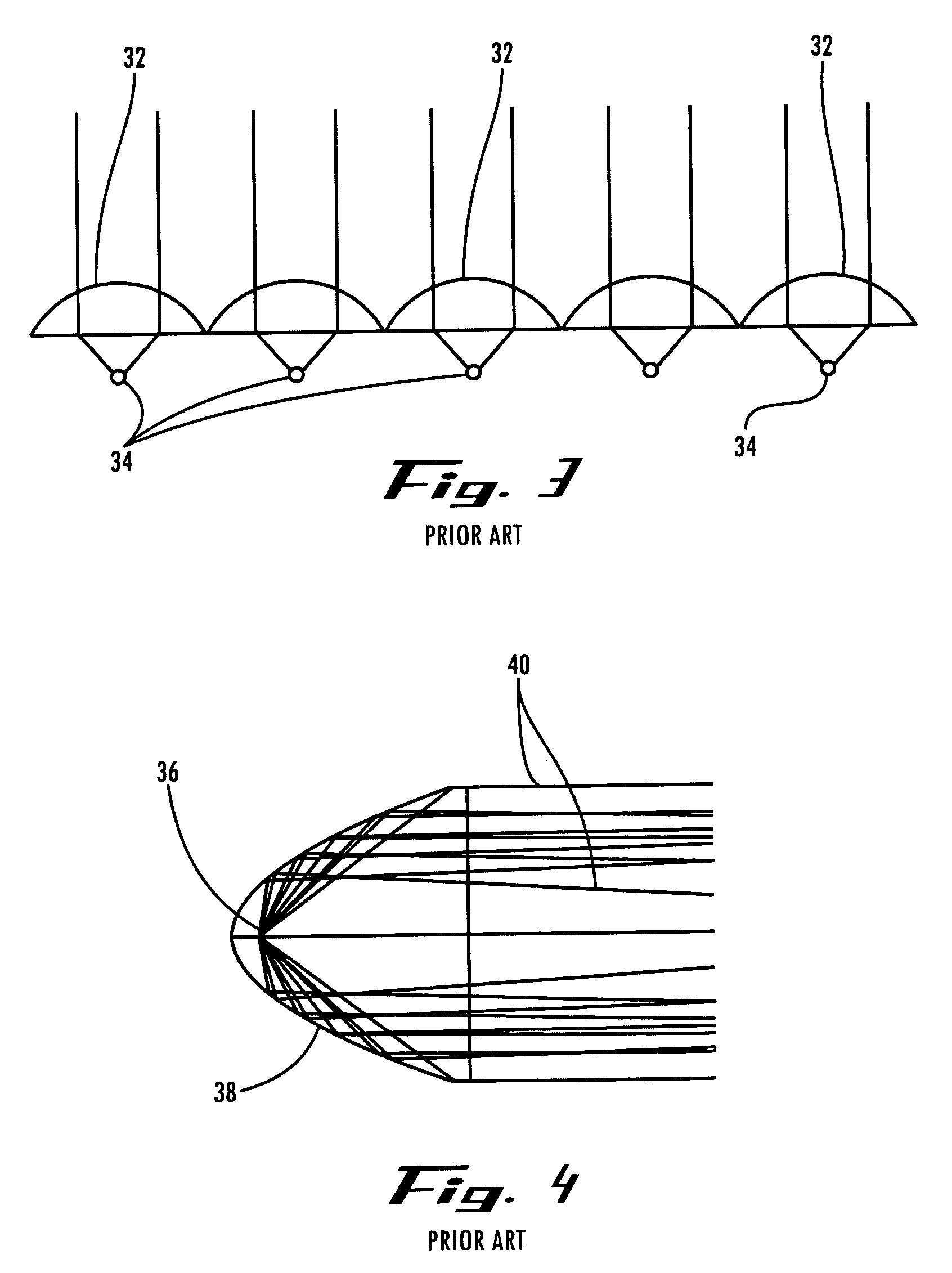Micro-reflectors on a substrate for high-density LED array
a technology of led arrays and micro-reflectors, which is applied in the direction of basic electric elements, electrical equipment, semiconductor devices, etc., can solve the problems of divergence and fall off, general undesirable close proximity, and inability to achieve high-density led arrays, etc., to enhance the array's optical power and enhance the optical power
- Summary
- Abstract
- Description
- Claims
- Application Information
AI Technical Summary
Benefits of technology
Problems solved by technology
Method used
Image
Examples
Embodiment Construction
[0038]Representative embodiments of the present invention are shown in FIGS. 5-14, wherein similar features share common reference numerals.
[0039]In a basic embodiment, an LED array employs micro-reflectors. The micro-reflectors, generally, collect and collimate light from the LED array. In doing so, the micro-reflectors enhance the array's optical power. In typical applications, the LED array benefits from such enhanced optical power in that it may be physically located further away from a work surface and yet deliver optical power sufficient to enable proper operation.
[0040]FIG. 5 shows a portion of a dense LED array 50 that may be used for applications requiring high optical power density at the working surface. Such applications may include, for example, curing applications ranging from ink printing to the fabrication of DVDs and lithography. One such LED array is shown and described in U.S. patent application Ser. No. 10 / 984,589, filed Nov. 8, 2004, the entire contents of which...
PUM
 Login to View More
Login to View More Abstract
Description
Claims
Application Information
 Login to View More
Login to View More - R&D
- Intellectual Property
- Life Sciences
- Materials
- Tech Scout
- Unparalleled Data Quality
- Higher Quality Content
- 60% Fewer Hallucinations
Browse by: Latest US Patents, China's latest patents, Technical Efficacy Thesaurus, Application Domain, Technology Topic, Popular Technical Reports.
© 2025 PatSnap. All rights reserved.Legal|Privacy policy|Modern Slavery Act Transparency Statement|Sitemap|About US| Contact US: help@patsnap.com



